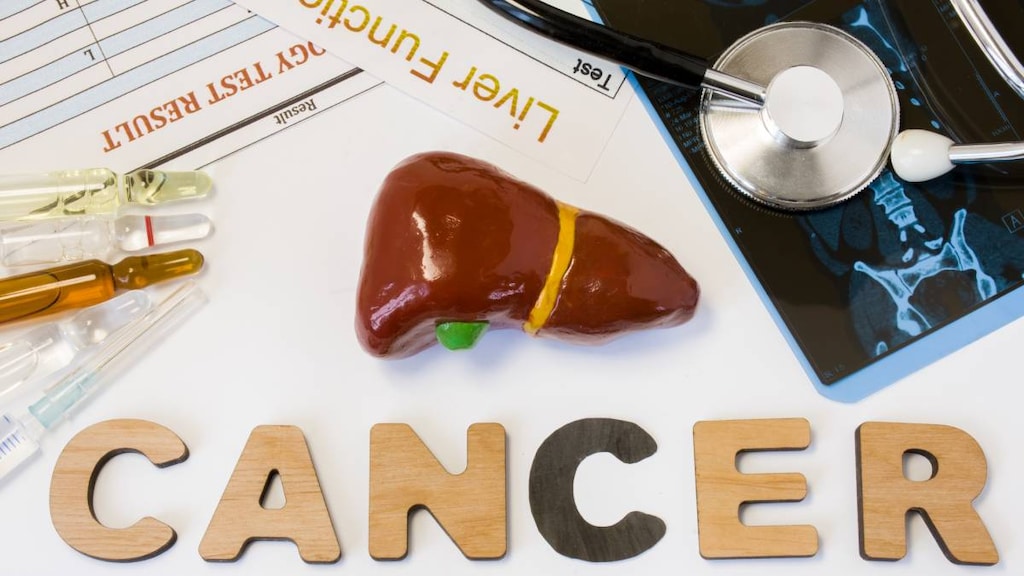Stage 4 Liver Cancer: Understanding the Prognosis

There’s no question that liver cancer is a challenging diagnosis. Though the cancer is rare in the United States, it also can be quite deadly when it does occur. The American Cancer Society estimated that about 42,000 people would be diagnosed with liver cancer in 2020 (nearly 30,000 men and about 12,000 women). The death rate from the cancer is close to the diagnosis rate, with almost 32,000 people expected to die from the disease.
The rate of liver cancer is fairly low in the United States. But around the world, it’s much worse, with some 800,000 new cases every year and more than 700,000 deaths. It’s the most common form of cancer in some African and Asian countries, and it’s a leading cause of cancer deaths worldwide.
Liver cancer stages
As the second largest organ of the body, the liver has a lot of important jobs. It filters harmful substances from the blood, provides energy to the body by processing nutrients from food and drink and even produces bile to help with digestion. The liver is essential for life, and cancer of the liver can cause a number of problems.
Like many other types of cancer, liver cancer is ranked in stages based on its severity. The general rule for most cancers is that the lower stage number you have, the smaller your cancer tumor or the less the cancer has spread, the American Cancer Society says. Liver cancers have stages 1 through 4, and stages 1, 3 and 4 all have an A and a B sub-stage, where B is more severe than A.
To determine the stage of a case of liver cancer, your doctor may use a system known as TNM that looks at three key pieces of information. Those are the size of the liver cancer tumor or tumors (T), whether the cancer has spread to any lymph nodes (N) and whether the cancer has metastasized (M), or spread to other organs in the body.
Defining stage 4
A number of factors are taken into consideration when determining the stage of a liver cancer case. These include the size of the tumor, how many tumors are present, how far the cancer has spread and where it has spread.
When it comes to the two types of stage 4 liver cancer, stages 4A and 4B, the breakdown is fairly straightforward. For stage 4A liver cancer to be present, the cancer must have spread from the liver to nearby lymph nodes (N1). If that has occurred, stage 4A is present no matter how large the tumor happens to be.
Stage 4B of liver cancer is equally straightforward. If the cancer has spread beyond the liver to distant organs such as the lungs or bones (M1), then this qualifies as stage 4B regardless of how large the tumor is or how many tumors are present. Stage 4A and 4B of liver cancer are the only stages where the cancer has spread beyond the liver.
The risks of liver cancer
Liver cancer happens to be a type of cancer for which the prognosis may not be good once you’ve been diagnosed with it. Perhaps the greatest hope, though, applies to those with early stage liver cancer who happen to be candidates for a liver transplant. In those instances, the five-year survival rate can be as high as 60 to 70 percent.
Other than those who can receive a liver transplant, however, the numbers related to liver cancer are unquestionably challenging, according to the American Cancer Society. For people with “localized” stages of liver cancer, which includes all of stage 1, all of stage 2 and some stage 3 cancers, the survival rate after five years is 31 percent. For people diagnosed with “regional” liver cancers, which includes some stage 3 cancers and all stage 4A cancers, the survival rate after five years is 11 percent. With stage 4B liver cancer, the five-year survival rate is 2 percent.
Understanding liver cancer survival rates
It’s understandable to be alarmed about the prognosis for stage 4 liver cancer. However, it’s also important to understand that other factors are involved in these rates. For example, the American Cancer Society notes that treatments are improving all the time, so these numbers are likely to get better. In addition, these rates only account for life expectancy at the time the cancer is first diagnosed. Survival rates also tend to be higher in general among younger, healthier individuals who respond better to treatment than among older and more frail patients.
Treatments for stage 4 liver cancer
According to the American Cancer Society, advanced stages of liver cancer, where the disease has spread to lymph nodes or other organs, usually cannot be treated with surgery. However, the Mayo Clinic notes that a number of treatment options are still possible for patients with advanced liver cancer. The purpose of these treatments is to control the cancer, slow its spread to other areas of the body, improve side effects and a patient’s overall quality of life and ideally help the patient live longer.
Treatments that might help include:
-
Radiation therapy. Radiation therapy can shrink tumors and kill cancer cells all over the body. This makes it useful for reducing symptoms and slowing the spread of cancer. It can also be targeted directly at the liver or other areas of the body affected by cancer. With advanced liver cancer, radiation therapy has shown value in managing symptoms.
-
Targeted therapy. Targeted therapies are a unique and growing treatment option for liver cancer. Some targeted therapies may block the abnormalities of liver cancer cells and lead to the cell death. Your doctor may recommend testing your cancer cells in a laboratory to determine whether targeted therapy can help you.
-
Biological therapy. Also known as immunotherapy, biological therapies are treatments that use the body’s immune system or synthetic chemicals similar to those in the immune system to treat cancer. They help people with advanced liver cancer by blocking proteins produced by cancer cells that stifle the immune system’s reaction to the cancer.
-
Chemotherapy. Chemotherapy, which refers to medications that kill rapidly growing cells, is sometimes used to treat advanced liver cancer. The chemo can be delivered through IVs or pills and is known for what can be severe side effects.
-
Clinical trials. New and ongoing trials that are testing new methods of treating stage 4 liver cancer may be available as well. You can ask your doctor about these opportunities.
-
Supportive care. Because many cases of advanced liver cancer are fatal, it’s also important to keep the patient comfortable and feeling his or her best during this difficult time. That’s the objective of supportive, also known as palliative, care, which helps a patient who's coping with the side effects of a serious illness or medications.
Stage 4 liver cancer coping and support
Stage 4 liver cancer can be a challenging diagnosis, whether it’s you or a loved one. The prognosis isn’t good, so it’s important for the patient to make preparations such as a will or end-of-life plan to prepare for the future. Of course, everyone in this situation needs support, whether it comes from friends and family or qualified professionals. Any support can help when coping with terminal cancer. As much as possible, the individual should also focus on living the best life possible through a healthy diet and regular activity when he or she feels up to it.
Article references
- Key Statistics about Liver Cancer, American Cancer Society, 2019, https://www.cancer.org/cancer/liver-cancer/about/what-is-key-statistics.html
- Your Liver, American Liver Foundation, 2019, https://liverfoundation.org/for-patients/about-the-liver/
- Liver Cancer Stages, American Cancer Society, 2019, https://www.cancer.org/cancer/liver-cancer/detection-diagnosis-staging/staging.html
- Liver Cancer Survival Rates, American Cancer Society, 2019, https://www.cancer.org/cancer/liver-cancer/detection-diagnosis-staging/survival-rates.html
- Liver Cancer, Mayo Clinic, 2019, https://www.mayoclinic.org/diseases-conditions/liver-cancer/diagnosis-treatment/drc-20353664



